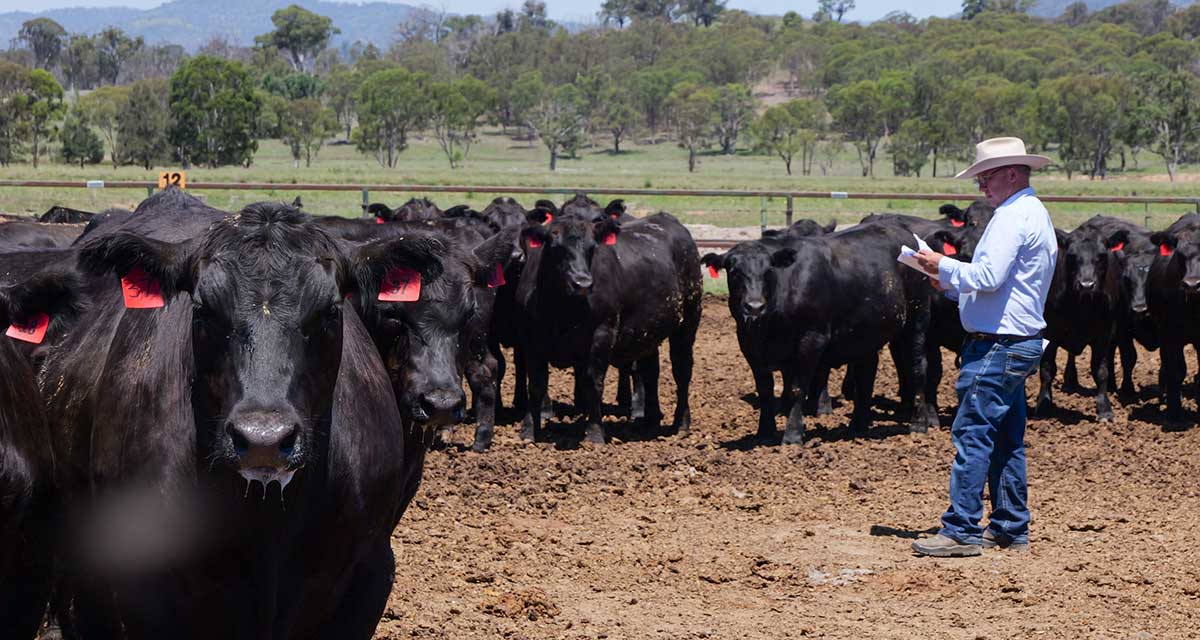Temperament remains the most important Bull Selection Criteria according to cattle producers


Temperament, also known as docility, is deemed the most important bull selection criteria and estimated breeding value by cattle producers, as reported by the 2024 Beef Breeding Insights Survey.
Angus Australia, through the “Enhancing Technology Adoption Across the Angus Genetic Improvement Pipeline” project funded by the MLA Donor Company (MDC), conducted surveys in 2019 and 2023 to assess changes in Australian beef producers’ knowledge and attitudes towards genetic technologies. The 2019 survey established baseline data from 1,023 producers, while the 2023 follow-up with 977 participants provided updated insights. The surveys aimed to monitor shifts in producer understanding and adoption of genetic technologies, as well as the prevalence of Angus cattle in the industry over time.
As reported in 2020, post the initial survey in 2019, temperament was viewed by beef producers as the most important bull selection criteria. Results from the 2024 Beef Breeding Insights survey revealed that not only is temperament highlighted as the most important bull selection criteria, but it is also considered one of the most important Estimated Breeding Value (EBV) and considered within the top 3 reasons producers select their respective breed. Producers in all states, and both Angus and non-Angus breeders listed temperament as the most important bull selection criteria.
Temperament refers to cattle behaviour in confined spaces or unfamiliar situations, often manifesting as either fear or aggression. Temperament is an essential trait in beef herds, with favourable temperament greatly contributing to the profitability of a beef enterprise.
The benefits of improved temperament are widely recognized for their role in enhancing herd efficiency and profitability. The advantages of good temperament, or docility, are well-documented and recognized throughout the industry.
Key benefits include:
Estimates of the genetic differences in temperament between Angus cattle can be assessed by the docility EBV provided by Trans-Tasman Angus Cattle Evaluation (TACE). The docility EBV describes the expected percentage of progeny with acceptable temperament based on docility scores collected through yard or crush assessment conducted at weaning.
Docility is a moderately heritable trait, with a heritability estimate of 0.21, making it possible to enhance docility through genetic selection. Additionally, weak but positive genetic correlations between docility scores and production traits suggest that selecting for improved temperament does not negatively impact growth, fat, muscle, or reproductive performance.
Angus Australia members have been making considerable genetic progress over the past 20 years as they continue to select for improved docility.

Figure 1 – Change in average Docility EBVs of Angus seedstock animals born over time.
By prioritising temperament in breeding strategies, producers can drive efficiency and profitability in the evolving beef industry.
For more information on temperament, docility scoring or the TACE Docility EBV, please visit the Angus Education Centre, or contact the office (02) 6773 4600.
KEY POINTS
For more insights derived from this survey, please visit the Australia Beef Breeder Insight report, which provides a detailed summary of the survey findings.